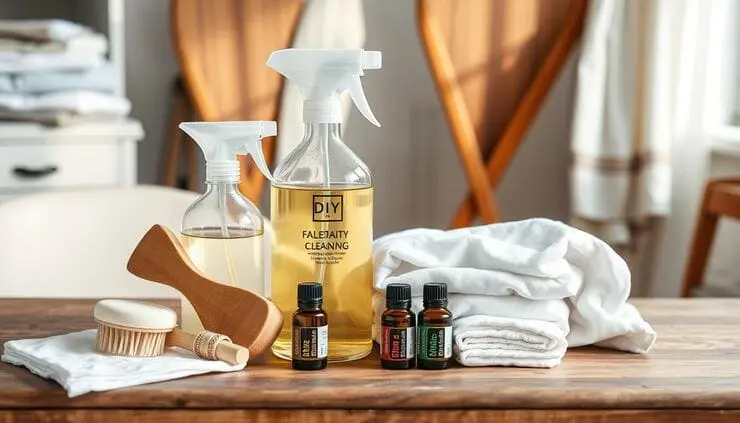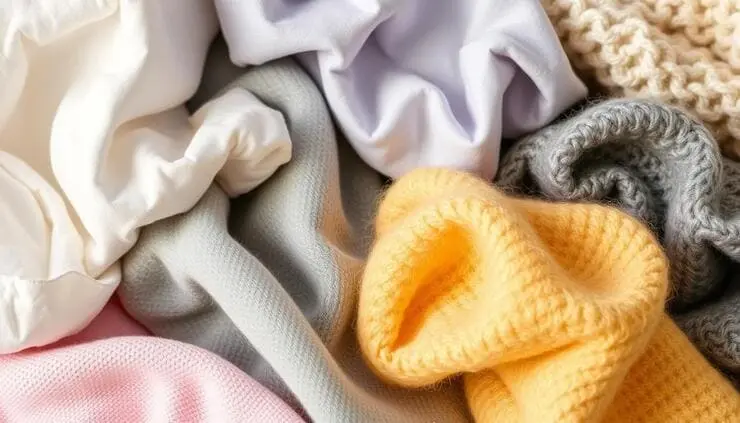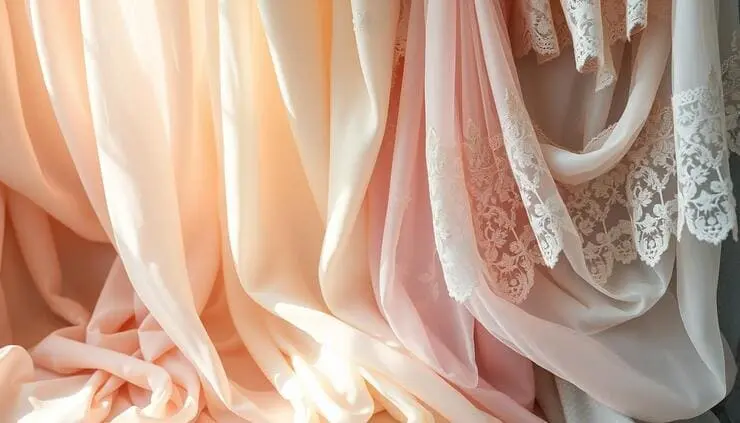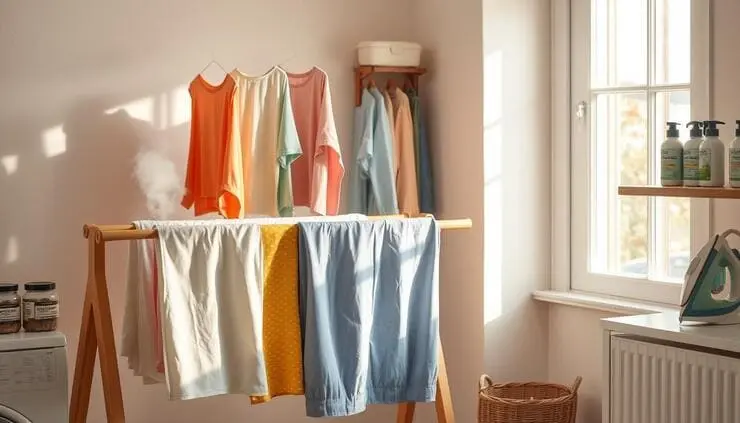Ever stood in your closet, eyeing that favorite silk blouse or wool sweater, wanting to wear it but worried about dry cleaning costs? It’s a common problem. But, what if you could dry clean clothes at home? This saves time and money, keeping your clothes looking great.
Learn how to dry clean clothes at home and save time and money. Dry cleaning at home is a convenient and affordable option. It helps keep your clothes fresh and lasting longer.
We’ll look at the benefits of DIY dry cleaning and the different methods you can use at home. Whether it’s a delicate silk blouse or a wool sweater, you can clean it yourself.
Table of Contents
Understanding Dry Cleaning

Dry cleansing is a unique manner to easy garments with out water. It uses chemicals to get rid of dirt and stains. This method is great for delicate fabrics because it keeps them looking good.
The name “dry cleaning” might confuse you. It does not imply that no liquid is used to clean the clothing. Instead, it uses a solvent like perchloroethylene to clean the clothes. This solvent is then gone, leaving the clothes clean and dry.
Why Certain Fabrics Need Special Care
- Delicate fabrics like silk and satin can get damaged by water. They lose their shine and shape.
- Woolen items, like suits, can shrink or lose their shape if machine washed. Dry cleaning keeps them looking great.
- Fabrics like suede and leather can’t be cleaned with water. It can make them discolored or damaged. The safest method of cleaning them is dry cleaning.
Common Misconceptions About Dry Cleaning
- Dry cleaning isn’t chemical-free. It uses solvents to clean clothes, not water.
- Dry cleaning isn’t always good for the environment. The chemicals used can harm the environment if not disposed of right.
- You don’t always need dry cleaning for delicate fabrics. You can clean many fabrics safely at home with the right products and techniques.
Knowing how dry cleaning works and its benefits can help you take better care of your clothes. By clearing up myths, you can find better ways to clean your clothes at home.
Preparing to Dry Clean Clothes at Home

Starting a DIY dry cleaning journey needs some prep work. First, pick the right DIY dry cleaning products for your clothes. Also, get the Essential Materials for Dry Cleaning at Home. This is key for a safe and effective cleaning process.
Choosing the Right DIY Dry Cleaning Products
There are many eco-friendly and effective DIY dry cleaning products out there. Look for dry cleaning solvents, spot removers, and fabric refreshers made for home use. These are gentler on fabrics and can give you professional results without harsh chemicals.
Essential Tools for Home Dry Cleaning
- Dry cleaning solvent
- Home dry cleaning kit.
- Stain remover pen or spray
- Fabric steamer or iron
- Garment bags or hangers
- Lint roller or brush
- Spotting board or clean, flat surface
When doing DIY dry cleaning, safety is a top priority. Always read and follow the product instructions. Ensure that your work area is well ventilated. Wear gloves to protect your hands.
Before using any new product, test it on a small, hidden area of the garment. This way, you can enjoy home dry cleaning safely and effectively.
Identifying Clothes for Home Dry Cleaning

Knowing which fabrics are safe for home dry cleaning can save you time and money. Some delicate materials like silk, wool, and cashmere need special care. This is often best left to professional dry cleaners. But, you can still do some dry cleaning at home for many types of clothes.
Which Fabrics Are Safe to Dry Clean at Home?
Choosing the right fabrics is key for home dry cleaning. Cotton, linen, and polyester are usually safe for DIY cleaning. These fabrics can handle the gentle cleaning methods used at home.
Garments with simple embellishments, like buttons or sequins, are also good for at-home cleaning.
When to Skip DIY and Visit a Professional
Home dry cleaning can save money, but some fabrics are better off with professionals. Delicate materials like silk, satin, velvet, and lace need extra care. Clothes with heavy stains, complex patterns, or intricate designs also benefit from professional help.
Always check the garment’s care label or ask a reputable dry cleaner for advice.
Knowing when to use home dry cleaning and when to go to a professional helps keep your clothes looking great. It also makes the most of DIY cleaning methods.
DIY Dry Cleaning Techniques

Materials Needed
- White vinegar (for odor removal)
- Baking soda (for stains and deodorizing)
- Gentle fabric brush or toothbrush
- Clean towels or microfiber cloths
- Spray bottle with water
- Handheld steamer or iron with steam setting
- Mesh laundry bags (for delicate items)
- Hanger or drying rack
Steps to Dry Clean Clothes at Home
- Check Fabric Care Tags
Carefully read each garment’s care tag to confirm that it’s safe for at-home cleaning. Fabrics like wool, silk, and some synthetics typically respond well to DIY techniques. - Spot-Treat Stains
For individual stains, sprinkle a small amount of baking soda onto the stain, then dampen a cloth with water and gently dab the area. For tougher stains, use a small amount of white vinegar and let it sit for a few minutes before blotting. - Freshen with Steam
Use a handheld steamer or an iron with a steam setting to refresh the entire garment. Hold the steamer about an inch away from the fabric and move in gentle, sweeping motions to avoid water spots. - Remove Odors Naturally
Mix equal parts water and white vinegar in a spray bottle and lightly mist your garment. To get rid of any residual smells, let it air dry in a well-ventilated place. - Use Baking Soda for Extra Freshness
If garments are still holding odors, place them in a large bag with a cup of baking soda. Shake the bag gently to distribute the baking soda, leave it sealed for a few hours, then shake off any powder residue. - Dry and Hang
After steaming or spot-cleaning, hang your clothes on a drying rack to air dry completely. Make sure they’re in a well-ventilated area to prevent mildew. - Store Safely
Once dry, place delicate fabrics in mesh bags or breathable garment covers to protect them from dust. Store in a cool, dry space for longevity.
By following these steps and using household materials, you can take advantage of DIY Dry Cleaning Techniques to maintain your wardrobe, keep fabrics fresh, and extend the life of your favorite pieces.
Dry Cleaning Specific Fabrics

Dry cleaning at home can change the game. But, it’s key to know how to handle different fabrics right. Luxurious silk, cozy wool, and cashmere need special care to keep them looking great. We’ll share how to dry clean these delicate textiles safely.
How to Dry Clean Silk Without Damage
Silk is very delicate and easily damaged. When cleaning silk at home, use a gentle dry cleaning solution. Avoid harsh scrubbing or shaking the fabric. Gently blot and air dry to keep soft.
Tips for Freshening Wool and Cashmere
Wool and cashmere can benefit from dry cleaning. Start by brushing off any dirt with a fabric brush. Then, spot clean stains carefully, making sure not to soak the whole garment.
Handling Delicate Lace, Satin, and Velvet
Lace, satin, and velvet need a gentle touch when cleaning. To get rid of dirt or stains, use a brush with soft bristles. Cleaning solutions should always be tested first on a small area. Air drying is essential to keep these fabrics in shape.
Removing Odors and Freshening Clothes

It’s important to keep your clothes smelling fresh and clean between washes. This helps you look polished and put-together. There are many ways to get rid of odors and make your clothes smell nice using natural deodorizers and essential oils.
Baking soda is great for making clothes smell fresh. Just sprinkle a bit into the washing machine or on your clothes. Let it sit for a few minutes, then brush or vacuum it off. Activated charcoal is also good for absorbing odors. You can put it in closets or drawers to keep clothes smelling fresh.
How to Use Essential Oils for a Clean Scent
Essential oils are a natural way to make your clothes smell clean and fresh. Mix a few drops of your favorite oil, like lemon or lavender, with water in a spray bottle. Lightly spray your clothes with it. You can also put a few drops on a cotton ball and put it in your dresser or closet.
Quick Tips to Keep Clothes Smelling Fresh
- Hang or fold clothes right after washing to stop musty smells.
- Use cedar blocks or sachets in closets and drawers to keep moths away and fabrics fresh.
- Try sprinkling dry shampoo on fabric between washes to soak up oil and smells.
- Let clothes air out in direct sunlight to naturally get rid of odors.
Using these natural deodorizing methods and quick tips can help your clothes stay fresh. This way, you can go longer between full washes, saving you time and money on your wardrobe.
Stain Removal at Home

Dealing with stubborn stains can be frustrating. However, you may quickly get rid of them if you know the right techniques. Knowing how to handle different stains is key to success.
Stains come from many sources like food, oil, ink, or makeup. Every stain requires a unique method of removal. Learn about common stain types, such as:
- Protein-based stains (e.g., blood, egg, milk)
- Oil-based stains (e.g., grease, makeup, motor oil)
- Tannin-based stains (e.g., coffee, tea, red wine)
- Dye-based stains (e.g., ink, ballpoint pen)
Easy Stain Removal Tricks for DIY Dry Cleaning
For DIY stain treatment, try these effective methods. Some useful tricks include:
- Using a mild detergent or spot cleaner to gently blot the stain
- Applying a mixture of water and white vinegar to help break down the stain
- Treating the affected area with a specialized stain remover or pre-treatment solution
- Utilizing the steam method to freshen and lift stains
Mistakes to Avoid When Treating Stains
While DIY stain removal works well, avoid common mistakes. These can set the stain or damage the fabric. Don’t:
- Rubbing the stain aggressively, which can spread it or damage the fabric
- Using hot water on certain stains, as this can set the stain
- Applying harsh chemicals or bleach, which can discolor or weaken the fabric
- Attempting to remove stains on delicate fabrics without proper care and precautions
By understanding stains and using the right stain removal techniques for your DIY dry cleaning, you can tackle tough spots. This keeps your clothes looking great.
Maintaining Clothes Between Cleanings

Keeping your clothes looking great between cleanings is easy. Just follow a few simple tips and best practices. This way, you can make your clothes last longer and stay fresh. Let’s explore some effective ways to keep your clothes in top shape.
Simple Tips to Extend the Time Between Cleans
To make clothes last longer between cleanings, be proactive. Spot clean stains right away with a mild detergent and cold water. This stops stains from getting worse and reduces the need for a full dry cleaning.
Also, how you store your clothes matters. Hang delicate items and fold sturdier fabrics. This helps avoid wrinkles and keeps clothes looking neat.
Best Practices to Keep Clothes Looking New
- Invest in a quality garment steamer to quickly refresh and de-wrinkle your clothes between wears.
- Rotate your wardrobe and give each piece a break to maintain its shape and appearance.
- Properly store off-season clothing in breathable garment bags or boxes to protect them from dust and environmental factors.
- Treat fabrics with care – avoid over-washing, use gentle detergents, and air-dry whenever possible to preserve the integrity of the material.
By following these clothing maintenance tips, you can extend garment life. This means you’ll need to take clothes to the dry cleaner less often. You’ll save time and money, and your clothes will stay in great condition.
Conclusion
Dry cleaning your clothes at home can change the game. By learning DIY dry cleaning, you save time and money. You also keep your clothes looking fresh and vibrant.
You now know how to care for different fabrics and remove stains. This means you can clean your favorite clothes at home. You won’t need to go to a professional dry cleaner anymore.
Start using these DIY dry cleaning benefits in your daily routine. Your clothes will last longer, and you’ll feel good about keeping them in great shape. No more hassle or high costs of professional dry cleaning.
Now, you can manage your wardrobe better. You’ll save time and money while keeping your clothes looking amazing. Enjoy the ease and pride of dry cleaning clothes at home. Make it a habit that boosts your style and saves resources.

